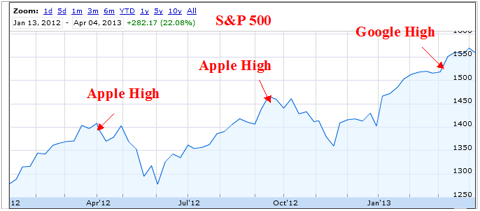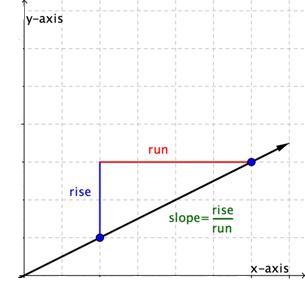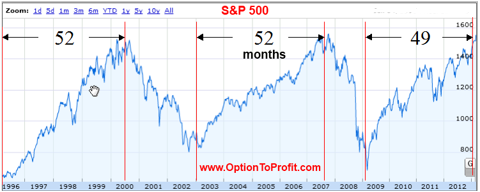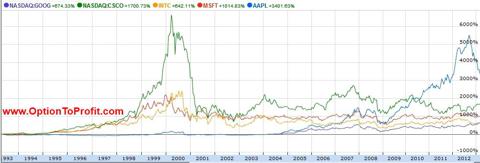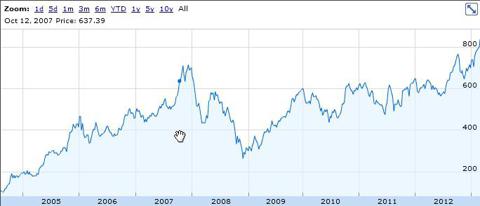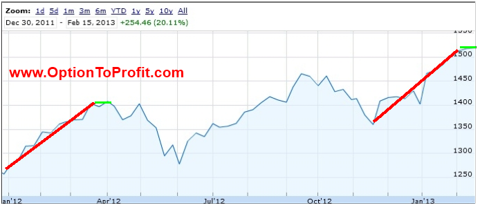 I’m finally feeling bullish. Sort of.
I’m finally feeling bullish. Sort of.
Two months ago I started getting a very uneasy feeling.
Normally, money burns a hole in my pocket. Sadly for the economy, that’s not the case when it comes to consumer goods, but it’s definitely the case when it comes to stocks.
Selling options, and predominantly of the weekly variety, I often have had the pleasure of awaking Monday morning to see freshly deposited cash in my account as shares upon which I had written weekly call contracts were assigned.
But that has changed recently, ever since that uneasy feeling hit.
The principal change was not immediately going out on shopping sprees on Monday mornings and instead building up cash caches. Among the changes were also the use of longer option contract periods because of the realization that so often market downturns happen suddenly and I would prefer not to be caught flat-footed or in-between contracts when and if it does occur.
But now, after what is the worst week of 2013, it may be time for yet another transition, of sorts.
As the April 2013 cycle has come to an end and many of those contracts have been assigned or rolled over to May 2013, being flush with cash at a time that some stocks have had some meaningful declines introduces temptation.
Jim Cramer used to say “there’s always a bull market somewhere.” I may still harbor the belief that the market is poised to mime the same period of 2012, but within that bearish sentiment I do see some glimmers of hope and opportunity as there is a universe of beaten down stocks that may have deserved better.
The week’s selections are categorized as either Traditional, Momentum, or “PEE” (see details). Although my preference, during this period of pessimism is to continue seeking high quality, dividend paying stocks as a defensive position, there aren’t many of those to consider this week. Instead, earnings and injured shares predominate.
Anadarko (APC) is one of those stocks that has seen a relatively large drop recently, but has been showing some strength at $79. It does report earnings on May 6, 2013, but the weekly option premium is unusually high for the period two weeks before earnings. While the monthly premiums are also attractive, this may be one of the situations where I would still consider the use of a weekly contract.
eBay (EBAY) also had a rough week. it is among those stocks that have had some significant drops that may have been overdone. Down about 7% following earnings its share price is approaching the $52.50 level where it has had some reasonable strength. It too may warrant a look at the weekly option contracts, especially if it appears as if there may be some market stability early next week.
In a similar situation, General Electric (GE) suffered a 4% earnings related loss on Friday and is down about 8% over the past 2 months. It too is approaching a price level where it has been pretty comfortable and when GE is comfortable, so am I. Flush with cash itself, GE may continue its own spending spree which is sometimes a short term share price depressant. If its current share price is maintained or goes a bit lower on Monday, it may be one of those few positions that I do not immediately cover by selling call options, but rather await some price rebound and then sell options.
I was disappointed when it was decided that Texas Instruments (TXN) would no longer have weekly options offered. However, the concern is now on hold as the monthly contracts look better and better every day, especially as volatility and premiums are increasing. Texas Instruments goes ex-dividend this week and that is a significant repository of its appeal to me. However, before it does so, it reports earnings. I don’t particularly see a compelling trade based on that event on Monday afternoon, so I would likely wait until after that occurs to decide whether the premium offered is still appealing enough to purchase shares.
Although I’m overweight in the Technology Sector, and despite the fact that its performance hasn’t been spectacular, sometimes I do find it hard to resist after price pullbacks. That was certainly the case after re-purchasing shares of Cypress Semiconductor (CY) after its deep fall upon earnings and disappointing guidance. Although IBM’s (IBM) earnings report on Friday cast a little bit of a pall over the sector some values appear to available. For the coming week, both Cisco (CSCO) and Oracle (ORCL), which I owned just a week ago prior to its assignment are again in a price range that works for me, Even as I hold uncovered shares of sector mate Riverbed Technology (RVBD) which reports earnings this week and often follows Oracle’s pattern, I believe that there are opportunities at these levels even in a weak overall market.
I always like MetLife (MET). So often, however, it seems just as I want to purchase shares the rest of the world has had the same idea and I’m reluctant to chase the stock. This past week, it along with the market settled down a bit. It always offers a fair option premium and it is a resilient performer even in the face of overall market adversity.
Although I also always like YUM Brands (YUM) that, unfortunately, doesn’t give me freedom to extend that to its products, as I’m now sworn to keeping my cholesterol within survivable levels. However, perhaps increasing my use of MetLife products might offset the use of YUM’s goods. After a fairly significant price fall, YUM Brands is back to the range that offers me as much comfort as their foods. I think that it is immune from near term Chinese economic concerns, the market having digested that along with its drumsticks.
With Apple (AAPL) sinking below $400/share and earnings set to be announced this week it’s not a far stretch of the imagination to believe that there may be significant price movement upon their release. Always a volatile holding upon earnings and guidance, there isn’t much pent up frustration any longer. Following more than a 40% drop in share price most shareholders and long time advocates have had ample opportunity to vent. Although Steve Jobs was notorious for his strategy of under-promising and over-delivering, it’s hard to imagine that expectations could get any lower. I think Apple is a good earnings play, factoring in a 10% price drop in return for nearly a 1% ROI. Relative to the market, i expect Apple to trade higher in the aftermath of its eagerly awaited news, which makes the sale of out of the money put options particularly appealing.
Netflix (NFLX) certainly would qualify as a finalist in any “comeback stock of the year” competition. I haven’t owned shares in almost 90 points. Like the other earnings related selections this week, it is certainly capable of a dramatic move when earnings and guidance are released. In this case, there may be opportunity to still derive a 1% ROI even if share price falls by as much as 25%. Risky? Yes, but Green Mountain (GMCR) has shown that momentum stocks can come back more than once. Even a significant price drop can no longer be counted upon as being a conclusion to the Netflix story. What was once considered the end of its run, Netflix has successfully gone on to its second life and could easily have a third.
Finally, Amazon (AMZN) is actually my least compelling earnings related trade in that the price drop cushion in order to achieve a 1% ROI is only about 8%. With a universal chorus deriding the razor thin margins and the P/E one has to wonder when that point will arrive that the market decides to treat Amazon as it does many other companies that spend time in rarefied environments. Still, if the cash in my pocket gets too hot this may be its final resting place.
Traditional Stocks: Anadarko, Cisco, eBay, General Electric, MetLife, Oracle
Momentum Stocks: YUM Brands
Double Dip Dividend: Texas Instruments (4/26)
Premiums Enhanced by Earnings: Amazon (4/25 PM), Apple (4/23 PM), Netflix (4/22 PM)
Remember, these are just guidelines for the coming week. Some of the above selections may be sent to Option to Profit subscribers as actionable Trading Alerts, most often coupling a share purchase with call option sales or the sale of covered put contracts. Alerts are sent in adjustment to and consideration of market movements, in an attempt to create a healthy income stream for the week with reduction of trading risk.
Some of the stocks mentioned in this article may be viewed for their past performance utilizing the Option to Profit strategy.


